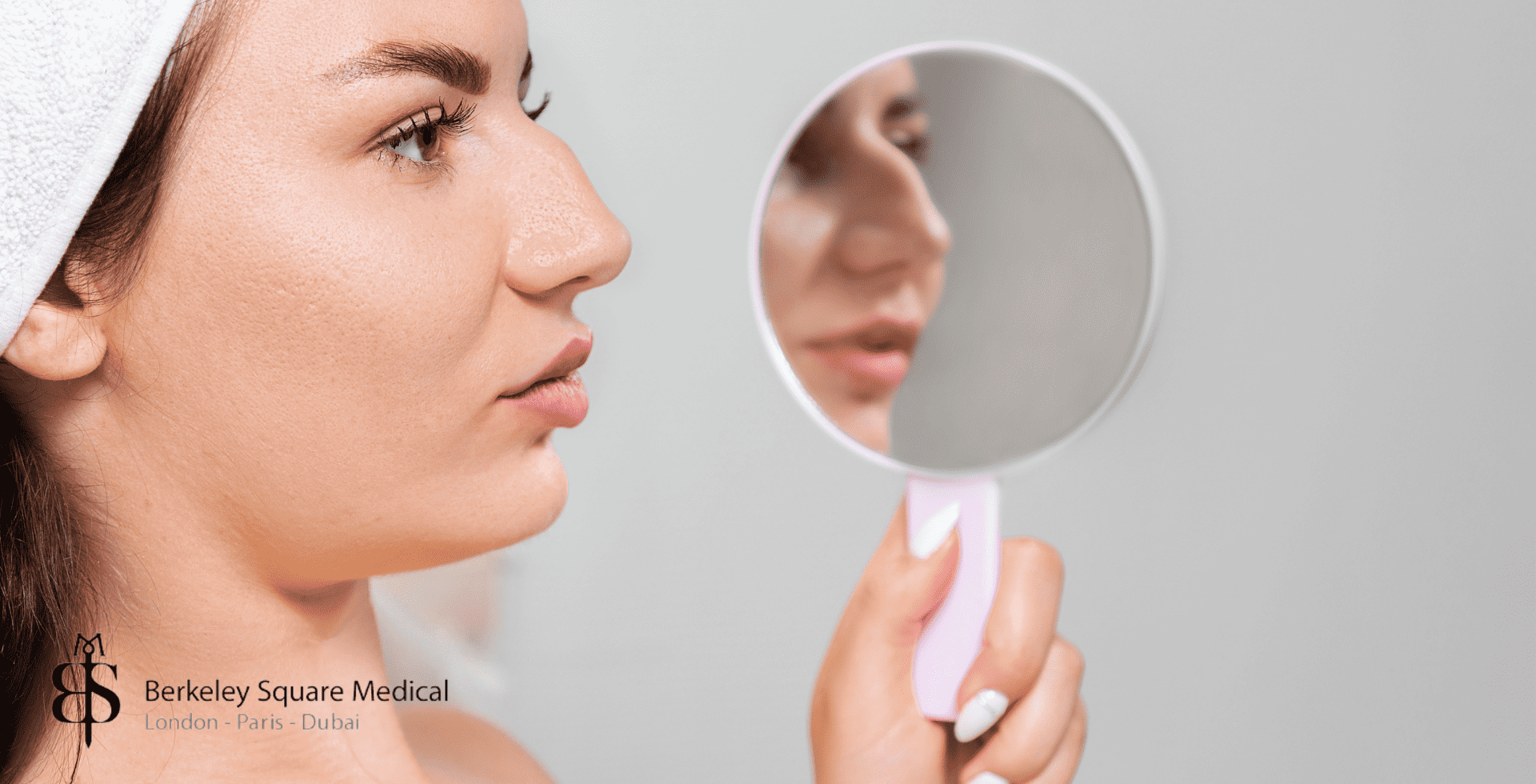
If you have had rhinoplasty surgery and are concerned that you may be developing a pollybeak deformity, we cover everything you need to know about the condition and treatment in this article. This is a relatively common complication after rhinoplasty surgery, but it can be treated well.
As the name suggests, a pollybeak deformity is when the nose resembles the shape of a bird beak when looked at from the profile view. The supratip – which is the area of the nose located between the nose tip and the saddle – is fuller and more prominent than the tip, causing this visual deformity. (1)
There are a few reasons why a pollybeak shape can occur. One common reason is that the surgeon removes too little of the dorsal hump during rhinoplasty surgery. This can result in too much residual cartilage remaining close to the tip of the nose leading to extra fullness of the supratip area compared to the rest of the nose.
Another possible cause is an overly aggressive removal of the nasal septum. When combined with a more prominent nose tip that was not taken into consideration by the surgeon, the end result might show a pollybeak shape.
Finally, unexpected scar tissue growth can also cause the condition. This might happen when after surgery, the skin does not fit the underlying structure perfectly, allowing extra scar tissue to develop underneath the skin.
The experience of the rhinoplasty surgeon can play an important role here. Patients with thicker skin usually heal slightly differently than others. If the surgeon is inexperienced, it might be difficult for them to anticipate how the final shape of the nose will develop after surgery.
During the first weeks, swelling is natural which means that you will not see the final shape of your nose until it has subsided. For most patients, swelling disappears after 1-2 months but for some individuals, it might take up to a full year.
It is important to be aware of this and not worry if your nose looks slightly different than you expected in the early days – give it time to heal!
If you still suspect that you might be developing a pollybeak, let your surgeon know when you are going back to your post-op visit. An experienced surgeon will be able to tell if this is the case.
Depending on the type of surgery you had and how thick your skin is, it might take 3-6 months before you can be certain that you have the deformity.
The correction usually requires a revision rhinoplasty procedure. An experienced facial surgeon must assess the nose structure and correct the underlying reason for the condition.
Depending on the cause, this usually means either trimming down the excess dorsal hump, trimming a thicker nose tip cartilage, or using a graft to achieve the desired nose shape.
At Berkeley Square Medical, we routinely perform secondary nose surgeries on patients who come to us because they are unhappy with the result of their primary rhinoplasty surgery.
If you suspect that you have pollybeak deformity or are otherwise dissatisfied with the results, book a consultation with us and have your nose examined by our award-winning consultant facial plastic surgeon who is specializing in rhinoplasty.